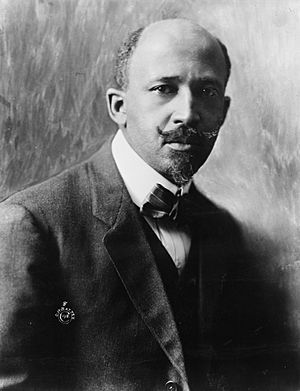May Childs Nerney facts for kids
Quick facts for kids
May Childs Nerney
|
|
|---|---|
| Died | December 17, 1959 |
| Education | Cornell University (1902) New York State Library School (1905) |
| Known for | Civil rights activism, biography of Thomas Edison |
May Childs Nerney (who was also known as Mary) was an American civil rights activist and librarian. She passed away on December 17, 1959.
From 1912 to 1916, she was the secretary of the NAACP. During her time, the organization grew much larger. She led protests against the unfair separation of federal government workers in Washington, D.C.. She also protested against the movie The Birth of a Nation (1915).
Nerney had some disagreements with other members of the NAACP and left in 1916. Later, she helped organize Thomas Edison's papers. In 1934, she wrote a book about him called Thomas A. Edison, A Modern Olympian. She also worked with groups like the League of Women Voters and the Young Women's Christian Association.
Contents
Early Life and Education
May Nerney went to Cornell University and graduated in 1902. Three years later, in 1905, she earned another degree from the New York State Library School.
After finishing her studies, she worked at the New York State Library. There, she was in charge of buying books and managing the history section. In 1910, Nerney moved to California to work at the California State Library. She was a skilled librarian, so the state librarian, James Louis Gillis, hired her to help improve the library system.
Nerney moved to New Jersey in October 1911. She was hired by the Newark Public Library in 1911 and worked there as a reference librarian until 1912.
Working with the NAACP
The National Association for the Advancement of Colored People (NAACP) was started in 1909. Its goal was to fight for the civil rights of African Americans in the United States.
In 1912, May Nerney was hired as the secretary of the NAACP. She was chosen because she was very good at organizing and leading. Her job was to help the NAACP grow. She did this by raising money, getting more members, and starting new local branches.
Historians have said that Nerney was one of the most important and effective white secretaries of the NAACP before 1920. They noted she was a very hard worker. She also believed that Black people should be the main leaders of the NAACP.
Growing the NAACP
One of Nerney's biggest achievements was helping the NAACP grow a lot. In just four years, the organization went from 300 members and three local branches to 10,000 members and 63 branches! She traveled around the country and talked with many members.
Nerney also pushed for the NAACP to get most of its money from Black members. Before, it relied more on big donations from white supporters. This idea was supported by other leaders like Joel Elias Spingarn.
Nerney also worked to get more attention for the NAACP. She wrote many press releases and made sure important events were noticed. She helped with legal cases, discussing them with lawyers and looking into situations. For example, she found that housing segregation in Richmond, Virginia, would not be a good test case for a lawsuit.
Important Campaigns
In 1913, Nerney led protests against the separation of Black and white workers in federal government offices. She visited Washington, D.C., twice. She also wrote a report called Segregation in the Government Departments at Washington. This report included interviews with Black government workers who described the unfair conditions. She also organized a campaign to send letters to the government about the issue. This report became widely known, even being shared by the Associated Press.
When the movie The Birth of a Nation came out in 1915, it caused a lot of controversy. The NAACP tried to get it banned or have some parts removed. Nerney supported efforts to protest the movie across different states, including Ohio.
Nerney often had disagreements with other NAACP leaders, such as Oswald Garrison Villard and W. E. B. Du Bois. Du Bois described her as having "excellent spirit and indefatigable energy" but also being "depressingly suspicious of motives."
Leaving the NAACP
Over time, tensions grew between Nerney and Du Bois. In 1914, they disagreed about Du Bois sharing his views on laws against interracial marriage as NAACP policy. This made Du Bois feel that she had "discredited me behind my back."
In January 1916, May Nerney left her role as secretary. She asked that a Black person replace her, suggesting people like Jessie Redmon Fauset. However, Royal Freeman Nash was chosen instead. Historians say that Nerney was a "driving force" behind the NAACP's early growth. She helped lay the foundation for what would become a very powerful organization fighting for racial fairness.
After leaving the NAACP, she also worked with the League of Women Voters, the board of the Young Women's Christian Association, and the Consumers Cooperative Services.
Working with Thomas Edison
In 1928, Nerney was hired to work at the Edison Laboratory. She was the secretary of historical research and helped organize Thomas Edison's many papers.
She decided to write a book about Edison because she felt there wasn't a good biography of him. Her book, Thomas A. Edison, A Modern Olympian, was published in 1934. It was 334 pages long. Nerney had interviewed Edison for the book and spent two years getting his papers ready before writing it. The book included many stories about Edison's life.
Later Life
After working at the Edison Laboratory, Nerney returned to the Newark Library. She worked there for ten years before retiring in 1948. May Childs Nerney passed away on December 17, 1959, at the age of eighty-three.
Images for kids



